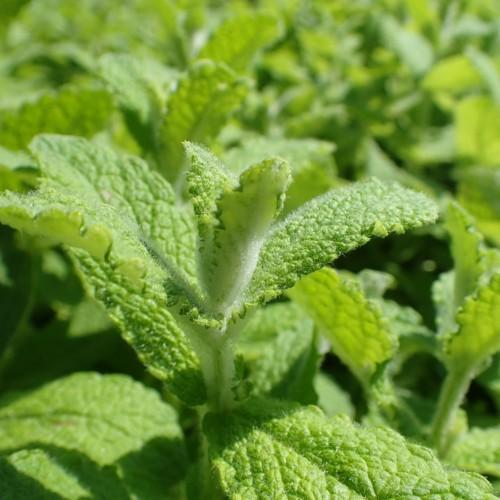
apple mint
Mentha suaveolens
Cycle:
Herbaceous Perennial
Watering:
Frequent
Hardiness Zone:
5 - 9
Flowers:
Flowers
Sun:
Full sun,part shade
Fruits:
Fruits Ready In
Leaf:
Yes
Growth Rate:
Low
Maintenance:
Moderate
Drought Tolerant:
Yes
Salt Tolerant:
Yes
Care Level:
Medium
watering
Apple mint requires weekly watering; it should be watered enough so that the top 1-2 inches of soil are slightly moistened and are no longer bone dry. To ensure that the soil remains moist, water Apple mint deeply for several minutes once a week. It is important to note that Apple mint should never be allowed to dry out completely. Watering should be done only when the topsoil begins to feel dry. During the peak summer months, Apple mint may require more frequent watering. Additionally, Apple mint should be watered in the morning or evening to prevent wilting due to the hot sun.
sunlight
Apple mint (Mentha suaveolens) prefers sunlight for at least 6 or more hours of sun each day. This plant enjoys direct sunlight in the morning, or bright light in the afternoon. Apple mint can also tolerate some partial shade. This species will not reach its full potential if it does not get enough sun. Additionally, Apple mint also appreciates the heat of summer for its full flowering and flavor.
pruning
Apple mint should be pruned twice a year, once in spring and once in fall. Pruning in spring should be done just after the last expected frost of the season to help encourage new growth. In the fall, wait until after the first frost to prune the mint. When trimming, cut the stems to no more than 4-6 inches from the ground. This will help keep the plant within its desired shape and also prevent it from becoming invasive. Too much pruning reduces the size of the plant but can also reduce its flavor. Take care not to prune more than 1-third of the total plant or the leaves can become smaller than usual. After pruning, dispose of the cuttings so they don't spread and create new plants nearby.
